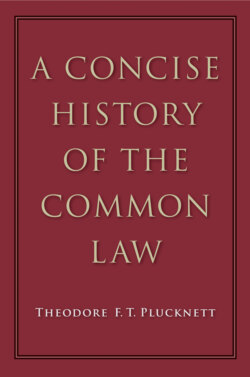Читать книгу A Concise History of the Common Law - Theodore F. T. Plucknett - Страница 22
На сайте Литреса книга снята с продажи.
CHAPTER 3 THE GREAT CHARTERS: LAW SEPARATES FROM ADMINISTRATION SUMMARY
ОглавлениеThe Position of the Crown
The Ideas of Hubert Walter
John and the Pope
The Great Charter
The Barons’ Wars
Henry II was followed successively by his sons Richard I (1189-1199) and John (1199-1216), and his grandson Henry III (1216-1272). During these reigns every sort of strain was placed upon the administration and upon the infant common law. It is a great tribute to his work that they both survived. Richard was absent from the realm for almost the whole of his ten years’ reign; John was involved in disastrous war abroad, civil war at home, insurrection, invasion and interdict. Henry III was a child of nine at his accession, with only his mother’s bracelet for a crown, and yet a few great-hearted nobles, encouraged by the paternal interest of Pope Honorius III, spared the land most of the troubles which usually attended a minority in those days. And soon, by the middle of Henry’s reign, one of his judges, Henry de Bracton, was already preparing material for an immense and detailed treatise on the common law beside which the little book of Glanvill would seem a mere pamphlet, and he tells us that the best cases are those in the earlier years of the reign—so flourishing was the law even in those troubled times. The secret is surely to be found in the permanence of the administration established by the Norman kings, which withstood all these shocks, grew, prospered, and finally (as every administration must) became the parent of new law, and of new legal machinery.
